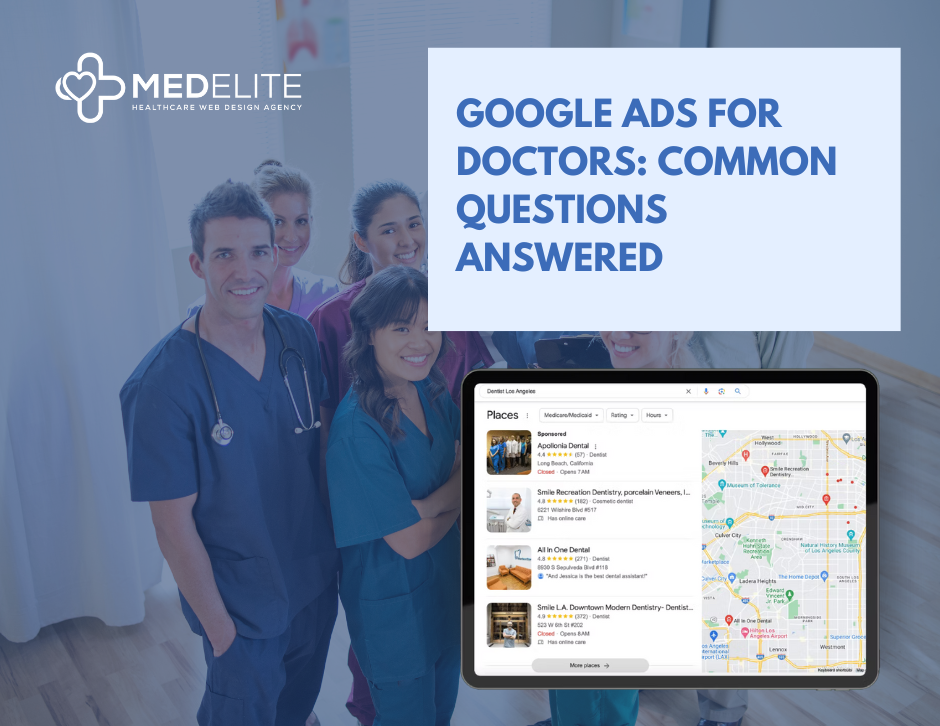How Top Medical Practices Use Their Websites to Book More Appointments
- Marta Alexandrovna

- Feb 14
- 4 min read

The digital shift in healthcare is clear. Recent studies show 68% of patients prefer online appointment scheduling, yet many medical practices struggle to meet this demand. Behind every unfilled appointment slot and missed connection lies a website that isn't performing as it should.
Medical websites often focus on looking professional while overlooking what patients actually need - a simple way to schedule their next visit. This gap between presentation and functionality costs practices hundreds of potential patient bookings monthly.
Essential Website Elements That Drive Appointments
The path from website visitor to scheduled patient requires specific elements working together. A medical website must blend functionality with simplicity.
Key components of high-performing medical websites include:
Strategic booking button placement in the header and service pages
Insurance verification tools before the scheduling step
Patient forms accessible before appointments
Clear service descriptions with pricing transparency
Mobile-responsive booking calendars
Simple contact options for questions
Each element serves a specific purpose in converting visitors to patients. The booking button's color and placement might seem like small details, but data shows they impact scheduling rates significantly.
Creating a Patient-Focused Website Structure
Website structure determines how easily patients can find what they need. The most effective medical websites organize information based on common patient questions and concerns.
Service pages should speak directly to patient needs. Rather than listing medical procedures, focus on addressing patient concerns. When describing treatments, include essential details about duration, recovery, and insurance coverage. This information helps patients make informed decisions about booking appointments.
The about page does more than showcase credentials. It bridges the gap between professional expertise and personal care. Including staff photos and brief personal bios helps patients feel more comfortable scheduling their first visit.
Location pages need practical details beyond basic contact information. Including details about parking, building access, and nearby landmarks removes uncertainty that might prevent booking.
Smart Booking Systems That Work
Modern medical practices need booking systems that do more than just schedule appointments. The right system reduces administrative work while improving the patient experience.
Quality booking systems handle:
1. Real-time calendar synchronization
2. Automated appointment confirmations
3. Insurance verification
4. Patient reminder sequences
5. Waitlist management
6. Cancellation rescheduling
The system should integrate with existing practice management software, creating a seamless flow of patient information from booking to appointment.
Building Trust Through Design and Content
Patient trust starts with their first website visit. A medical website needs more than just a professional appearance - it needs elements that actively build confidence in your practice.
Patient reviews work best when strategically placed throughout your site. Instead of creating a dedicated testimonials page that few visitors see, integrate specific patient feedback within relevant service pages. A positive review about pediatric care carries more weight when placed next to your children's services information.
Professional credentials matter, but their presentation makes a difference. Rather than listing every certification, highlight those most relevant to each service. This targeted approach helps patients understand your specific expertise in their area of concern.
Fixing Common Website Issues
Medical practice websites often share similar problems that prevent patients from booking appointments. Understanding these issues is the first step toward fixing them.
Poor mobile optimization remains a persistent problem. With most patients searching for healthcare providers on their phones, a website that doesn't work well on mobile devices loses potential appointments daily.
Complicated booking forms create unnecessary barriers. Patients shouldn't need to provide their complete medical history just to schedule a first visit. Collect only essential information during the initial booking process.
Unclear service descriptions leave patients uncertain. Medical terminology often confuses patients, leading them to postpone booking. Using clear, straightforward language helps patients understand your services and take action.
Patient Follow-up That Makes Sense
Good follow-up systems keep schedules full and patients returning. The key lies in sending the right information at the right time.
Start with an immediate booking confirmation that includes:
Appointment date and time
Required paperwork links
Office location details
Preparation instructions
Cancellation policy
Send reminder messages 48 hours before appointments with any needed forms or preparation instructions. A final reminder 24 hours before helps reduce no-shows while giving patients time to reschedule if needed.
Making HIPAA Compliance Work
HIPAA compliance doesn't require sacrificing user experience. Modern booking systems protect patient information while maintaining a smooth scheduling process.
Secure forms should clearly explain data protection without overwhelming patients with technical details. Simple privacy notices and security indicators help build trust without creating anxiety about sharing information online.
Real Results in Practice
A multi-provider medical practice implemented these changes gradually over three months. Their booking system now handles 40% more appointments while requiring less staff intervention. Phone calls decreased significantly, allowing staff to focus on in-office patient care.
Moving Forward With Website Improvements
Starting website improvements requires a planned approach. Begin by identifying your biggest booking barriers through patient feedback and website analytics.
Focus initial improvements on:
Streamlining the booking process
Updating service descriptions
Improving mobile responsiveness
Adding clear insurance information
Implementing better follow-up systems
Track changes through:
New patient booking numbers
Form completion rates
Mobile vs desktop bookings
Staff time saved
Patient feedback
Creating Lasting Impact
Medical practice websites serve one primary purpose - connecting patients with care. Every element should work toward making this connection easier and more efficient.
The most effective medical websites blend professional presentation with practical functionality. They guide patients naturally from their first visit to a booked appointment, building trust along the way.
Remember that website improvement is an ongoing process. Regular updates based on patient feedback and booking data help ensure your website continues to serve both your practice and your patients effectively.





Comments